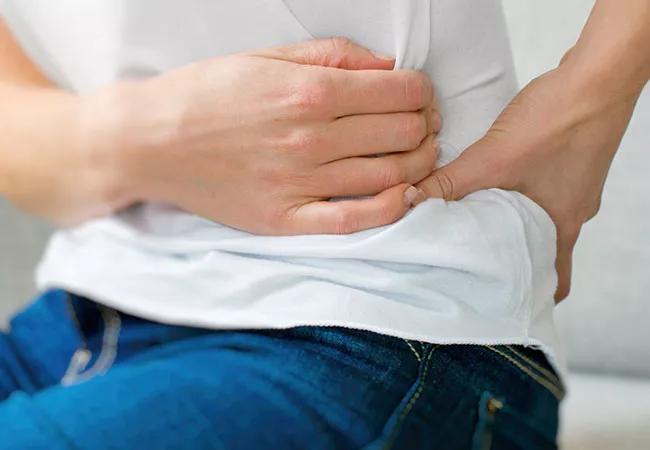Pediatric nephrolithiasis cases up mostly in adolescents

The fact that kidney stones (nephrolithiasis) in the pediatric population have been on the rise is a phenomenon that Jeffrey Donohoe, MD, a urologist at Cleveland Clinic’s Glickman Urological and Kidney Institute, has seen in his own career. Coming from Georgia, a part of the geographical region dubbed “the stone belt” for its high incidence of kidney stones, Dr. Donohoe hasn’t seen any difference in Cleveland. “It’s interesting that stones are becoming so common, it’s really not even ‘the stone belt’ anymore,” he says.
Advertisement
Cleveland Clinic is a non-profit academic medical center. Advertising on our site helps support our mission. We do not endorse non-Cleveland Clinic products or services. Policy
In the last 20 years, cases of pediatric nephrolithiasis have increased each year by an estimated 4 percent to 10 percent. It appears that the greatest increase is in the 12- to 17-year-old set, and rates are higher in female teens than male.
Beyond metabolic disorders, anatomical abnormalities, certain medical conditions and medications, as well as genetic predisposition, there are a number of possible factors that may be contributing to this increase. For instance, a high-sodium diet and a sedentary lifestyle may be key culprits, says Dr. Donohoe.
Dehydration also seems to be a big factor. “People don’t hydrate enough. Even people who think that they hydrate enough don’t hydrate enough,” he says. When patients present with kidney stones, Dr. Donohoe has them do a 24-hour urine collection to look for metabolic causes. In all the patients who have done this in his 15-year career, only one or two have had a normal volume of urine. Low volume is by far the norm, in his experience.
Another common finding is a low citrate content in the urine. “We want citrate to be in high volume and high concentration because it has been shown to be a stone inhibitor to some degree,” says Dr. Donohoe. In order to induce higher levels, “we tell patients to drink lemonade made with real lemons,” he says.
A metabolic workup is always done, which includes the aforementioned 24-hour urine collection. All patients receive a renal ultrasound first and more aggressive imaging when needed. “We try to limit the use of CT scans with children because of the radiation content,” Dr. Donohoe says. Though ultrasounds aren’t as good at finding stones as CT imaging, “they can show you hydronephrosis. We do more imaging if necessary based on that.”
Advertisement
Utilizing ultrasound as the first-line type of study is in keeping with current pediatric diagnostic imaging recommendations. Despite this, CT is more often initially used all over the country. One study in Pediatrics of 9,228 commercially insured children between the ages of 1 and 17 years found that 63 percent presenting with nephrolithiasis had a CT study first and only 24 percent had an ultrasound first.
The majority of kids that come through don’t need any intervention, which is Dr. Donohoe’s goal. “Less intervention is always better,” he says. “Most of the stones that we see are small enough to watch and wait and see if they will spontaneously pass on their own.” A stone that’s 5 millimeters or less is “very likely to pass,” though medication to dilate the ureters may be needed to help it along, as well as analgesics. Patients are also instructed to drink 2 to 2½ liters of water a day if they’re over 12 years old and 1 to 1½ liters if they’re younger.
Even if intervention isn’t needed, just that initial consultation alleviates some concerns and helps families understand that this isn’t as uncommon as they may think it is, Dr. Donohoe says. “It hammers home the point that we’ll teach you how to handle this, but we’ll also be the ones taking care of you. If it needs to be surgically cared for, we’re the people that’ll do that, but we’re going to try to make it so that you don’t need surgery.”
The team follows patients for 30 to 40 days. “If they don’t pass the stone in that period of time, we intervene surgically,” says Dr. Donohoe. “We also tell them that if they get a fever, it’s a deal breaker. We have to intervene because they could have an ascending kidney infection, in which case, they would need to have a stent placed.”
Advertisement
Surgery is typically endoscopic. Collected stones, whether from the patient or via surgery, are sent to the lab for mineral analysis.
Suggested reading
Use of and Regional Variation in Initial CT Imaging for Kidney Stones
Pediatric Stone Disease
Advertisement
Advertisement

Integrated care model reduces length of stay, improves outpatient pain management

A closer look at the impact on procedures and patient outcomes

Experts advise thorough assessment of right ventricle and reinforcement of tricuspid valve

Study also finds that 26% of children with cancer have mutations in DNA repair genes

A closer look at current uses and future opportunities

Experts are challenging the one-size-fits-all paradigm

Quality improvement project addresses unplanned extubation

Cardiac imaging substudy is the latest paper originating from the VANISH trial